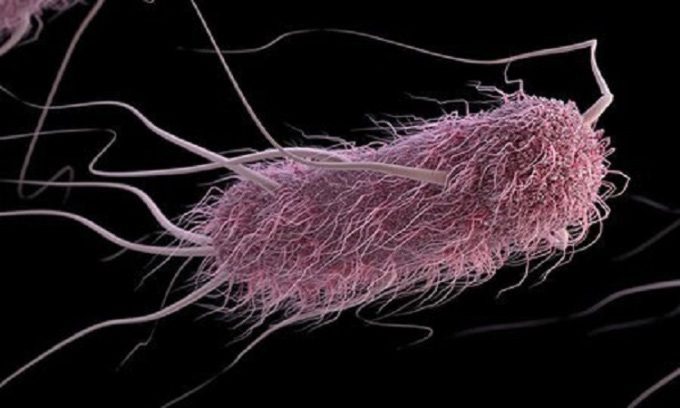A research team at Caltech has genetically modified E. coli bacteria and stimulated them with ultrasound to produce chemicals that destroy cancer cells without harming healthy cells.

Simulation of a bacterial cell. (Image: James Archer)
Scientists at the California Institute of Technology (Caltech) have discovered a better solution for chemotherapy to treat various types of cancer. Instead of killing both cancerous and healthy cells, such as hair follicles during chemotherapy, genetically modified bacteria controlled by sound specifically target and destroy cancer cells. In a recently published study in the journal Nature Communications, the research team from Professor Mikhail Shapiro’s chemical engineering lab reported that they developed a special strain of Escherichia coli (E. coli) capable of infiltrating tumors when injected into patients. Once they reach their destination, the bacteria can be stimulated to produce anti-cancer drugs using ultrasound pulses.
“The goal of this technology is to harness the ability of genetically modified probiotics to infiltrate tumors while using ultrasound to activate them to release effective drugs within the tumor,” Shapiro explained.
The starting point of the research was a strain of E. coli known as Nissle 1917, which has been approved for human use. After being injected into the bloodstream, these bacteria spread throughout the body. The patient’s immune system will eliminate them, except for the bacteria that have infiltrated the tumor, providing an immunosuppressive environment.
To effectively transform the bacteria into a useful tool for cancer treatment, the research team modified them to contain two new gene groups. One group is responsible for producing nano-antibodies, proteins that turn off the signals that tumors use to prevent the immune response. The presence of these antibodies allows the immune system to attack the tumor. The other gene group acts as a thermal switch that activates the nano-antibody gene when the bacteria reach a certain temperature threshold.
To warm the bacteria located deep inside the body, where the tumor is growing, the research team utilized Focused Ultrasound (FUS). FUS is similar to the ultrasound used for imaging internal organs or fetuses in the womb but operates at higher intensity and with a smaller focal point. Focusing ultrasound on a specific point causes the tissue at that location to heat up while leaving the surrounding tissue unaffected. By controlling the intensity of the ultrasound, researchers can raise the temperature of that tissue to the desired threshold.
To test whether the genetically modified bacterial strain worked as intended, the research team injected bacterial cells into mice with tumors in the laboratory. After allowing the bacteria time to infiltrate the tumor, they used sound waves to warm them. Through a series of tests, Shapiro and colleagues observed that mice treated with the new bacterial strain and ultrasound had tumors that grew much more slowly compared to mice treated with only ultrasound, only bacteria, or no treatment at all. However, the research team noted that they would need to optimize the method to direct thermal stimulation to the bacteria more accurately.


















































